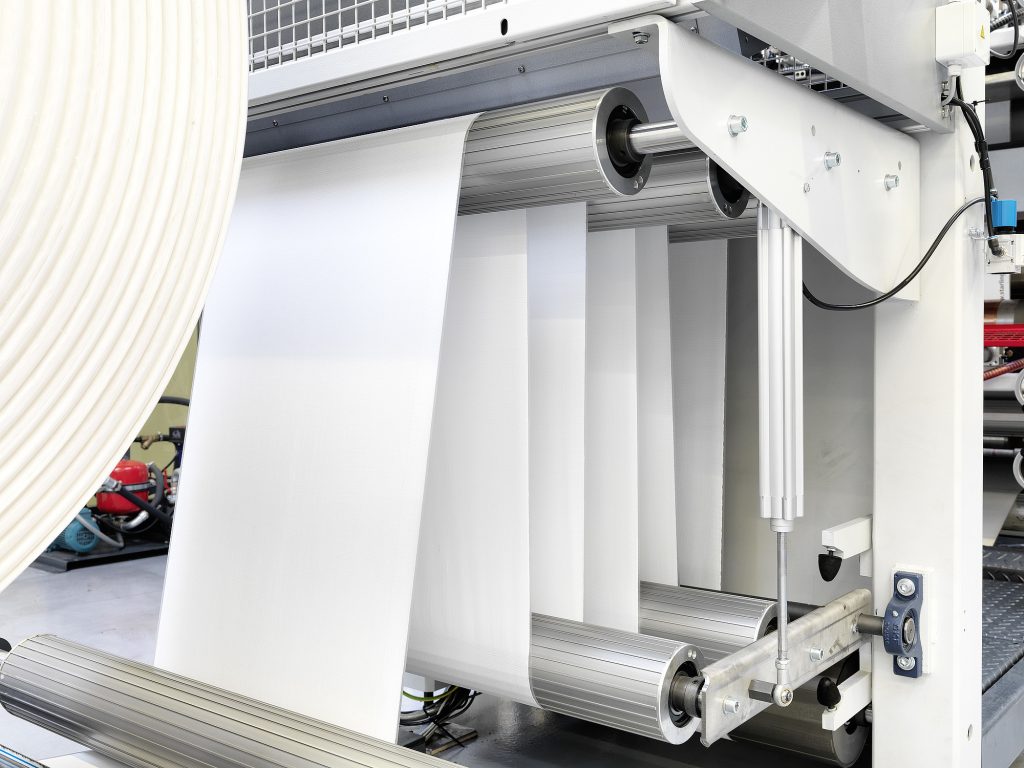
- Introduction: Bridging Sustainability and Industrial Demand
- 1. The Unique Advantages of Kraft Paper Woven Bags
- 2. Manufacturing Excellence: Starlinger and W&H Machinery
- 3. Sustainability and Compliance
- 4. Addressing Industry Queries: FAQs and Technical Insights
- 5. Future Directions: Smart Packaging and Automation
- Conclusion
Introduction: Bridging Sustainability and Industrial Demand
“How can a manufacturer like VidePak deliver both eco-friendly packaging and industrial-grade durability without compromising efficiency?” This question, raised by a European logistics director during a recent sustainability conference, underscores the dual expectations of modern packaging. For VidePak, the answer lies in advanced manufacturing technologies from Austrian Starlinger and German W&H, which enable high-speed production of kraft paper woven bags with unparalleled precision, customizability, and compliance with global environmental standards.
Founded in 2008 and led by Ray, VidePak employs 526 staff and generates $80 million annually. With over 100 Starlinger circular looms and 30+ printing machines, the company produces 50 million kraft paper woven bags yearly, serving industries from agriculture to construction. This report explores how VidePak’s technical expertise and machinery investments position it as a leader in sustainable, high-performance packaging.
1. The Unique Advantages of Kraft Paper Woven Bags
1.1 Material Composition and Environmental Benefits
Kraft paper woven bags combine natural kraft paper with polypropylene (PP) woven layers, offering:
- Biodegradability: Kraft paper decomposes 2–5 times faster than pure PP, reducing landfill impact.
- Strength: PP reinforcement provides tensile strengths up to 25 MPa, comparable to traditional plastic bags.
Table 1: Performance Comparison of Kraft Paper vs. Standard PP Bags
| Parameter | Kraft Paper Woven Bags | Standard PP Bags |
|---|---|---|
| Tensile Strength (MPa) | 22–25 | 25–30 |
| Decomposition Time | 6–12 months | 20–30 years |
| Cost per Unit | $0.15–$0.35 | $0.10–$0.25 |
| Primary Applications | Food, agriculture | Chemicals, construction |
1.2 Customization and Market Adaptability
VidePak’s multi-color printing capabilities (up to 8 colors) and bespoke designs cater to branding needs. For example, a 2024 project with a European coffee brand utilized kraft paper bags with custom UV-resistant prints, reducing packaging waste by 30%.
2. Manufacturing Excellence: Starlinger and W&H Machinery
2.1 High-Speed Automation
VidePak’s Starlinger CT-iQ Series circular looms operate at 200+ meters/minute, producing 12–14 threads/cm weaving density. This ensures:
- Consistency: Thickness variation <5% across batches.
- Efficiency: Multi-machine synchronization reduces downtime by 20%, achieving 1.2 million bags/month.
Case Study: In 2023, VidePak partnered with a U.S. agricultural supplier to produce 500,000 kraft paper bags for organic fertilizer. Using W&H’s extrusion lines, the project achieved a defect rate of 0.3%, far below the industry average of 2%.
2.2 Precision in Lamination and Printing
Starlinger’s lamination machines apply BOPP films with adhesive accuracy of ±0.1 mm, critical for moisture-proofing. Meanwhile, W&H’s gravure printing systems enable 1200 dpi resolution, ensuring vibrant branding even on textured surfaces.
3. Sustainability and Compliance
3.1 Circular Economy Integration
VidePak’s “GreenCycle” initiative recovers 70% of post-consumer kraft paper bags through partnerships with European recyclers. A 2024 pilot in Germany demonstrated a 40% reduction in carbon emissions compared to virgin material production.
3.2 Regulatory Compliance
- FDA Certification: Food-grade kraft paper bags meet FDA 21 CFR 176.170 standards for direct food contact.
- EU REACH: PP components are free of phthalates and heavy metals, aligning with Regulation (EC) No 1907/2006.
4. Addressing Industry Queries: FAQs and Technical Insights
FAQ 1: How does kraft paper withstand humid environments?
VidePak’s laminated bags use PE coatings (20–30 µm), reducing moisture absorption to <1.5% in 85% humidity, per ASTM D3273 testing.
FAQ 2: Are custom designs cost-effective for small orders?
Yes. VidePak’s modular printing systems support batches as small as 5,000 units, with setup times reduced to 2 hours via AI-driven template alignment.
5. Future Directions: Smart Packaging and Automation
- QR-Code Traceability: Pilot projects embed scannable codes for real-time supply chain monitoring.
- AI-Driven QC: Neural networks detect sub-0.1 mm defects, aiming for a 99.9% defect-free rate by 2026.
External Resources:
- Explore how kraft paper woven bags enhance packaging efficiency in global markets.
- Learn about sustainable practices in PP woven bag production aligned with VidePak’s GreenCycle initiative.
Conclusion
VidePak’s kraft paper woven bags exemplify the synergy between sustainability and industrial rigor. By leveraging Starlinger and W&H technologies, the company delivers solutions that meet stringent environmental regulations while maintaining competitive durability and customization. As Ray notes, “Innovation isn’t just about machinery—it’s about redefining packaging’s role in a circular economy.”
This report integrates data from industry whitepapers, ASTM/ISO standards, and VidePak’s operational disclosures.